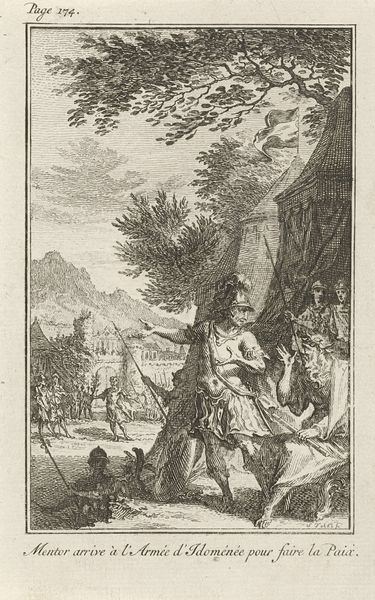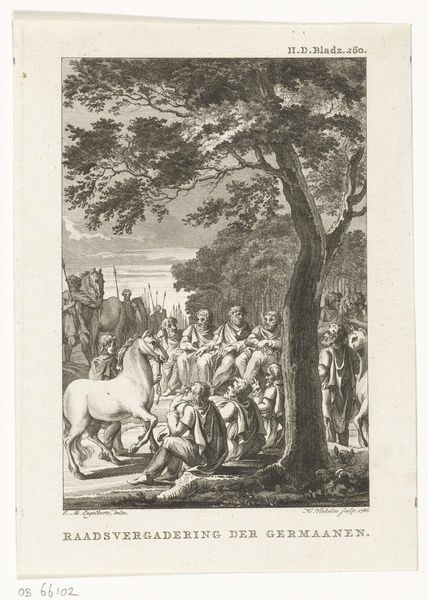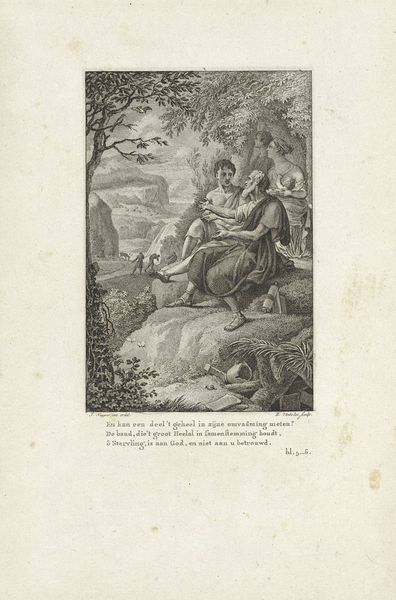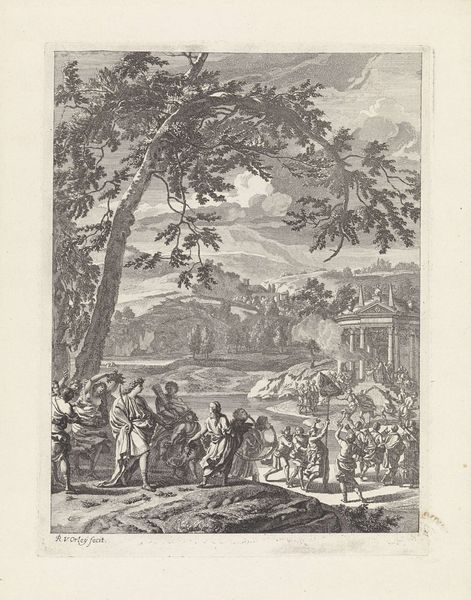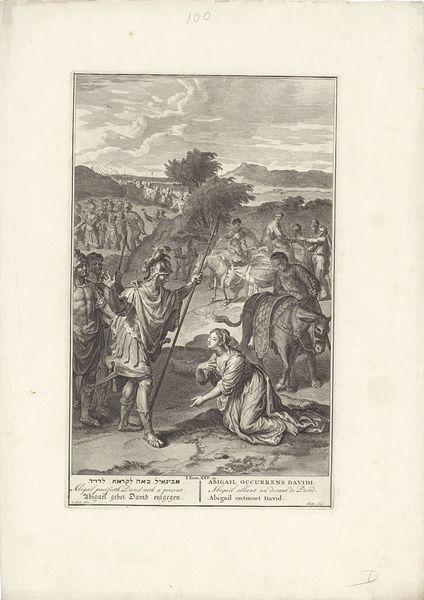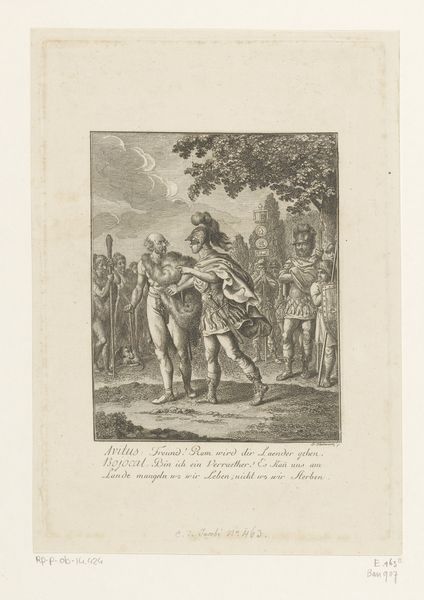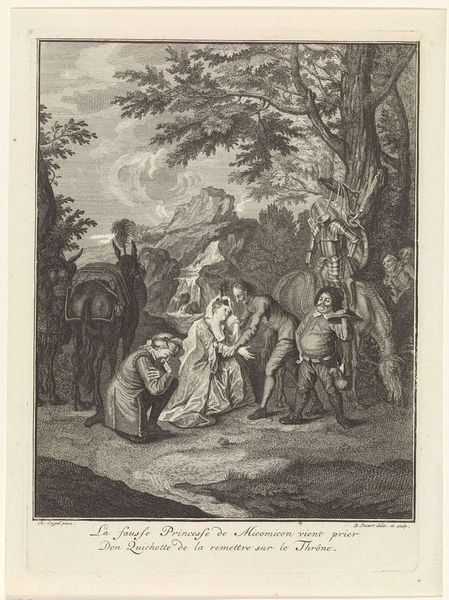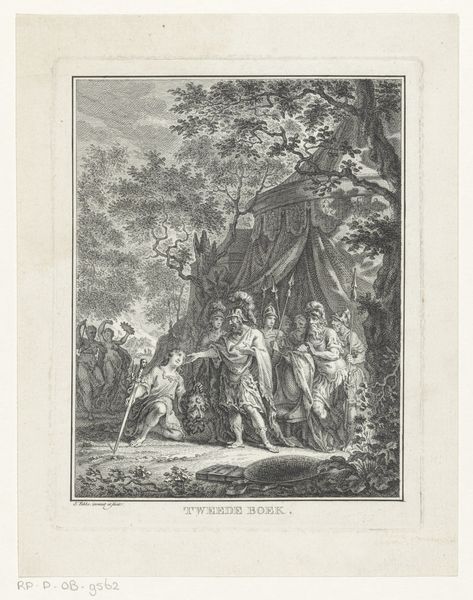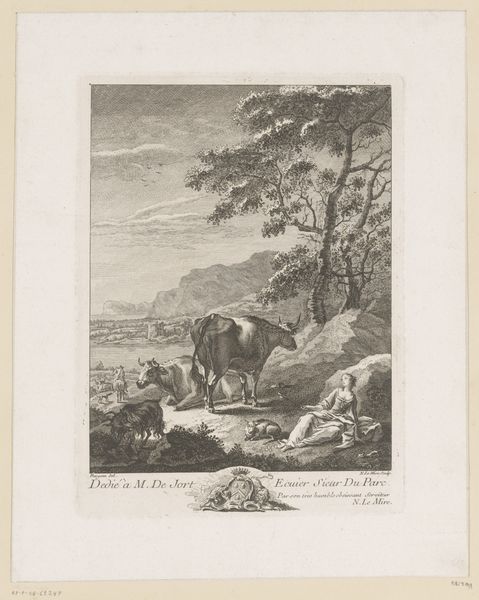
print, engraving
#
neoclacissism
# print
#
landscape
#
figuration
#
line
#
history-painting
#
academic-art
#
engraving
Dimensions: height 176 mm, width 116 mm
Copyright: Rijks Museum: Open Domain
Curator: This is "Krijgsoefeningen bij de Bataven," or "War Exercises of the Batavians," an engraving made around 1785 by Harmanus Vinkeles, currently housed in the Rijksmuseum. Editor: It strikes me as quite theatrical. Everyone seems posed, even the massed ranks in the distance, creating this atmosphere that's more about a statement than a scene of genuine military practice. Curator: Exactly! The theatricality underscores its Neoclassical style, evoking idealized Roman virtues of military discipline. Look at the central figure with the horned helmet on horseback. He has become this archetype representing leadership and the perceived Batavian spirit. The choice of the horned helmet is worth pondering since it aligns him more with images associated with northern pagan or Celtic cultures. Editor: Which feels deliberate, perhaps referencing pre-Roman ideals or mythologizing early Dutch identity against the backdrop of late 18th-century political turmoil. The Batavian Republic was, of course, shortly on the horizon… Were they trying to construct a visual narrative of strength? Curator: Most definitely. Observe the way the lines emphasize control and order. There is such linear clarity, no matter where your eyes rest in the work, which adds this additional symbolic order on top of its clear Neoclassical foundations. It all coalesces into a promotion of virtuous order against the backdrop of brewing revolution. Editor: I find the details in the background almost unnerving, the uniformity. The mass of soldiers look less like individual people and more like, well, lines, on the landscape. The leaders closer to us seem like individuals but perhaps not the ones these artists would elevate. Curator: Interesting point. The figures upfront embody the notion of authority—that almost mythic nobility—contrasting with the uniform mass meant to portray collective power in unison. There is an attempt to illustrate cultural and ethical identity via its leaders, however anachronistic those attempts may now read. Editor: Well, it leaves me with more questions than answers, I confess. Questions about the selective mythologizing and the uncomfortable ease with which these idealized leaders preside over that distant mass. Curator: For me, the image continues to remind me that symbolic languages, even visually codified as here, hold deep emotive and manipulative potential that spans centuries. It becomes all the more intriguing and sobering as one delves deeper into its historical framework.
Comments
No comments
Be the first to comment and join the conversation on the ultimate creative platform.

